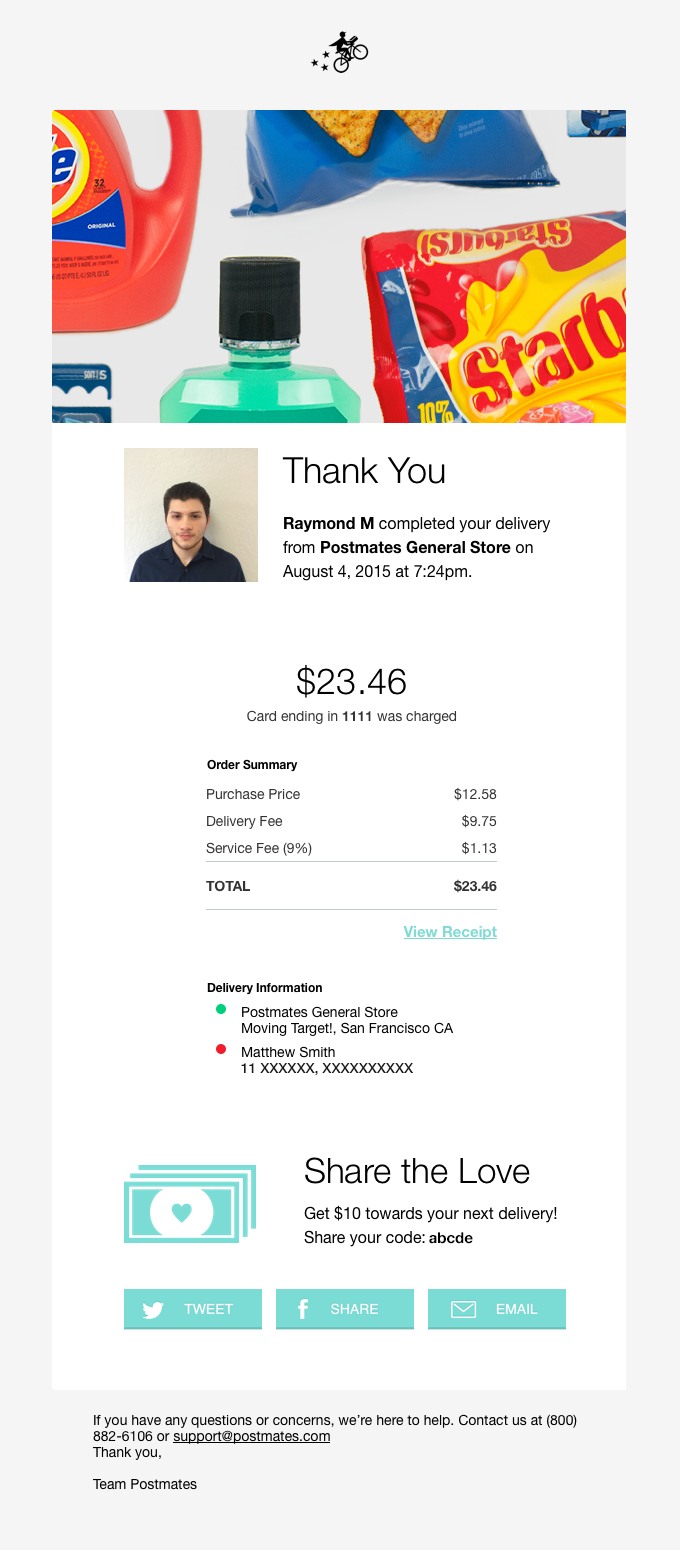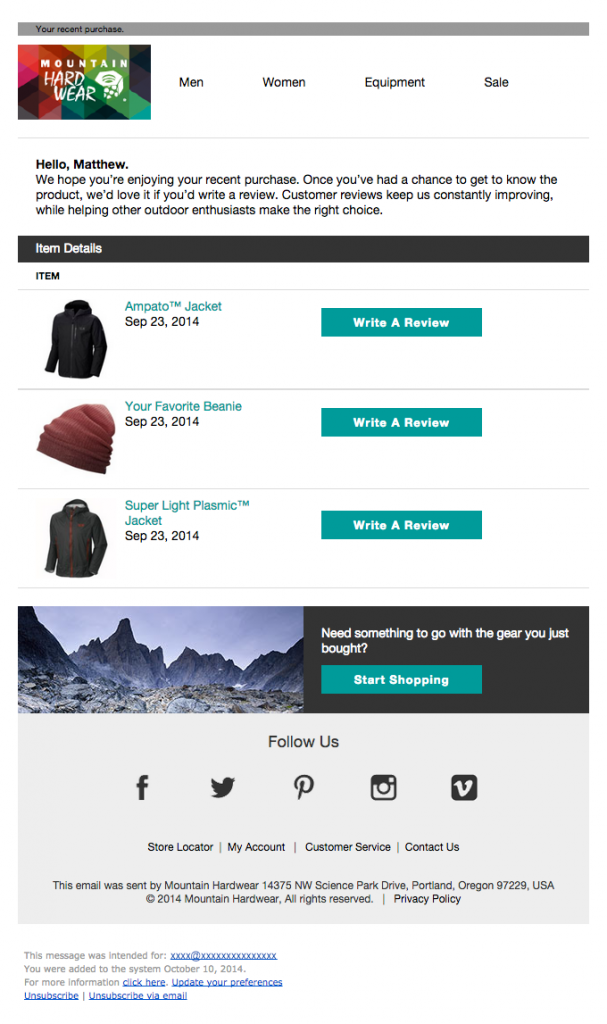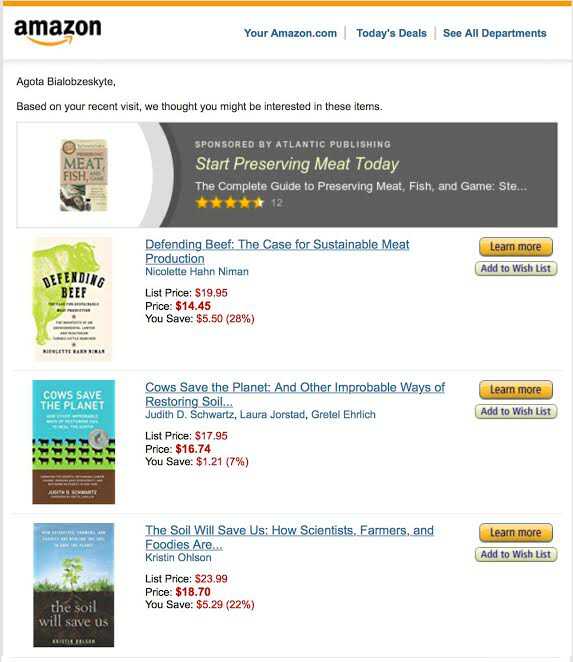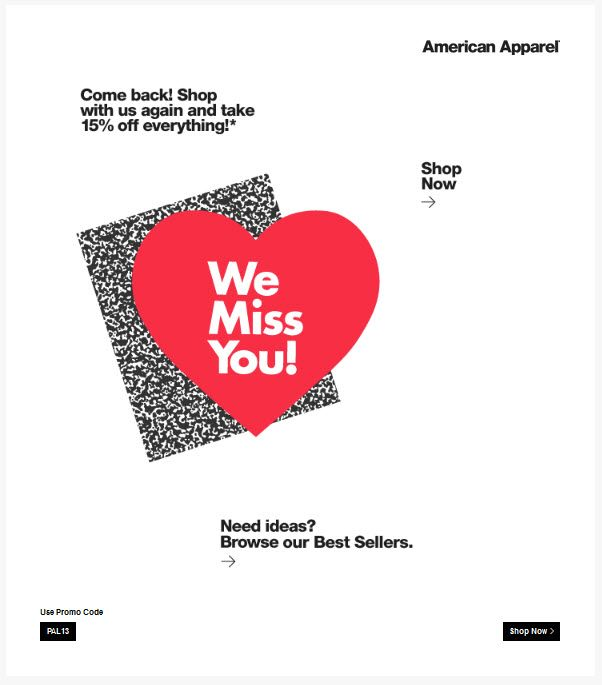Email Us: [email protected] Call Us: 0481 871 982
1. Shipping notification
When people buy something online, they are eager to get it, so you don’t want to keep them guessing whether the item has shipped or not.
Make sure to send out the shipping notification email as soon as the products have shipped. How should it look?
There are three key parts that should be present in any shipping notification email:
- “Your order has shipped!” (or similar) text. This is important because the sole purpose of this email is to inform the customer that the order has shipped. Make sure that this message is conveyed immediately by placing the text at the very top of the email.
- Order tracking details. A lot of people like to keep an eye on the goods they have purchased while they are in transit. Make sure that you provide the order number and the tracking details if possible.
- Order details. You should remind the customer what it is that they have ordered with short product descriptions, images, and prices.
Here’s a great shipment notification email from Joybird in which all three key parts are done very well:

Once you got the basics down, you can get creative and try to drive more sales by offering vouchers, discounts, etc.
2. “Delivered” notification
You also don’t want any ambiguity about whether an item has been delivered or not. Make sure to send the delivery notification to the customer. That way, if there are any problems and the customer didn’t get the item, you’ll know immediately and be able to resolve it.
“Delivered” notification emails are very similar to shipment notification emails. Here’s what they should include:
- “Your items have been delivered!” (or similar) text. Once again, the whole purpose of the email is to deliver this message, so make sure that it’s conveyed loud and clear by placing this text at the very top of the email.
- Delivery details. Will this product be delivered straight to someone’s door or will they have to go to the post office to get it? You should explain that in your email so that people would know what to do next.
- Order details. Remind the customer what exactly they have ordered by listing the products together with images and prices.
Here’s a great example of a “delivered” notification email which gets most of these things right:

3. Review request
Your post-shipping emails can not only generate repeat purchases from the customer who ordered – they can also generate purchases from other customers. To do this you need to send a review request email. 63% of consumers are more likely to purchase from a site if it has product ratings and reviews. Arguably making this email the most important one you send post-purchase.
Here’s what you should include in your review request:
- Explanation of what it is that you want. Make sure to explain that you want them to leave a review and why it’s so important for you.
- Reminder of what they have purchased. People have short memories. That’s why you should add a list of the products you want them to review together with images.
- Call-to-action buttons. The purpose of this email is to get product reviews, therefore call to action buttons should say something like “Write a review”.
Here’s a great example of review request email:

There’s one thing I’d do differently, though. I’d remove the “Start shopping” button. Why? Because having an additional call-to-action button only serves as a distraction. You should only have “Write a review” calls-to-action. There are times to upsell, but this is not one of those times.
4. Recommended Products
74% of shoppers are frustrated when shown content that is not personalized. But personalized product recommendations won’t only keep your customers from getting frustrated, they’ll also generate you more sales. Analyze the browsing and purchase history of the customer, then send them an email with the products they might be interested in.
That email should include:
- Explanation of what it’s all about. You should explain to the customer that these are some product recommendations that are based on their recent browsing history or their recent purchases. Otherwise they might think that you are just spamming them with random offers. You don’t want that!
- Recommended products. List recommended products, preferably with short descriptions and pictures.
- Call-to-action buttons. The purpose of this email is to drive people back to your store. Keep in mind that softer calls-to-action work better here (e.g. Amazon’s “Learn more” as opposed to something more aggressive like “Buy Now”).
Amazon has great product recommendation emails so I recommend you to learn from them:

5. Winback Email
It’s 5x more expensive acquiring a new customer than retaining an existing one. So you should do everything in your power to keep your customers from dropping off the face of the Earth! If all other efforts to keep them engaged with personalized content fail, your next step is a winback email.
The most effective winback emails usually offer a steep discount, but if a discount doesn’t work you can still remind your customers why the loved you in the first place.
Here’s an example of a win back email from American Apparel:

However, if after three win back emails there’s still no response, you should probably remove those inactive subscribers from the list, because they are unlikely to become active ever again.
